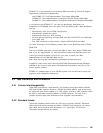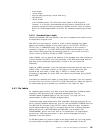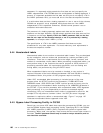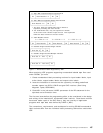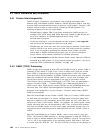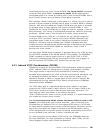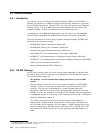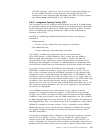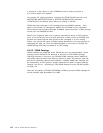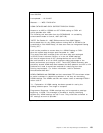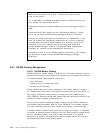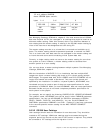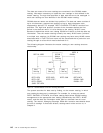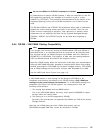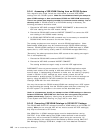•
OS CVOL catalogs - these are a carry-over from the past (pre-OS/390) and
are non-VSAM in structure. It has also been announced that OS CVOL
catalogs will not be supported after December 31st 1999. For these reasons,
they should
not
be implemented in your OS/390 system.
5.6.2.1 Integrated Catalog Facility (ICF)
The architecture of an ICF catalog is quite different from that of a VSAM catalog.
An integrated catalog facility catalog consists of two separate kinds of data sets:
a basic catalog structure (BCS) and a VSAM volume data set (VVDS). The BCS
can be considered the catalog, whereas the VVDS can be considered an
extension of the VTOC.
The BCS is a VSAM key-sequenced data set that contains the following
information:
•
VSAM data sets
− volume, security, ownership, and association information
•
Non-VSAM data sets
− volume, ownership, and association information
The VVDS is a VSAM entry-sequenced data set. Its name must be
SYS1.VVDS.Vvolser. A VVDS resides on every volume that has VSAM or
SMS-managed data cataloged in an ICF catalog. It contains the data set
characteristics, extent information, and the volume-related information of the
VSAM data sets cataloged in the BCS. For SMS-managed non-VSAM data sets,
the VVDS also contains data set characteristics and volume-related information.
If you use a function such as DITTO/ESA′s DID command or the ICKDSF
REFORMAT command to change a volume serial number (or volser), only the
VOL1 label is changed. Since the REFORMAT command or DID command only
changes the volser, it does
not
change the VVDS name. If a REFORMAT or DID
command is used to change the volser, the VVDS name will no longer adhere to
the required data set name format of SYS1.VVDS.Vvolser. If the VVDS name does
not adhere to the required name format, access to VSAM data sets on that
volume has been lost. You won′t be able to RECATALOG these data sets. If your
VSE system procedures depend on the use of this capability, those procedures
will have to be redesigned.
In the OS/390 environment you should define all your catalogs to be ICF
catalogs. ICF catalogs are generally superior in performance, virtual storage
savings, recoverability, and space utilization when compared to VSAM catalogs.
In addition, many new functions, such as VSAM compression, are only available
for SMS managed data sets, which requires use of ICF catalogs. ICF catalogs are
not compatible with VSE. You cannot access an ICF catalog from a VSE system.
OS/390 ICF catalogs do not own volumes. Thus, it is possible to have OS/390
VSAM data sets on a given volume that are cataloged in different ICF catalogs.
This implies changes to backup and recovery procedures commonly used in
VSE/ESA installations.
If a catalog is damaged, restore a backup of the catalog and perform a forward
recovery to bring it back into sync. Tools are available for catalog forward
recovery such as the Integrated Catalog Facility Recovery Utility (ICFRU). If a
cluster is damaged, the old version can be deleted, uncataloged, restored from a
backup and then forward recovery can be used to make the cluster data current.
Chapter 5. Disk and Tape Storage Considerations 111



